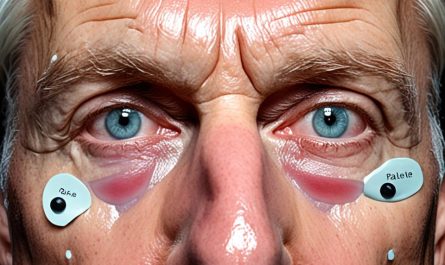As a Medicare beneficiary with diabetes, understanding the coverage for your medications and supplies is crucial for managing your condition effectively. This comprehensive article will explore the various diabetes medications and supplies that are covered under Medicare, ensuring you have the information you need to make informed decisions about your healthcare.
Medicare, the federal health insurance program for individuals aged 65 and older, as well as some younger people with disabilities, offers coverage for a wide range of diabetes-related medications and supplies. Whether you require oral medications, injectable therapies, or insulin pumps, Medicare’s different parts, including Part D prescription drug coverage, can provide the necessary support to manage your diabetes.
In this article, we will delve into the eligibility requirements, benefits, and cost-sharing associated with diabetes medications and supplies under Medicare. We will also discuss the role of Medicare Advantage plans, the importance of medication management, and the additional resources and support available to Medicare beneficiaries living with diabetes.
Read interesting things at : grenzgamer
Key Takeaways
- Medicare covers a wide range of diabetes medications, including oral medications, injectable therapies, and insulin pumps.
- Eligibility for diabetes coverage under Medicare is based on various factors, such as age, disability status, and enrollment in specific parts of the program.
- Cost-sharing and out-of-pocket expenses for diabetes medications and supplies can vary, depending on factors like deductibles, copayments, and the coverage gap (donut hole).
- Medicare Advantage plans may offer additional benefits and coverage for diabetes management, but it’s important to understand the plan’s specific terms and limitations.
- Medicare beneficiaries with diabetes have access to various resources and support programs to help them navigate their coverage and manage their condition effectively.
Understanding Diabetes and Medicare Coverage
Diabetes is a complex and chronic condition that affects millions of Americans, with varying types and impacts on individual health. Gaining a comprehensive understanding of the different types of diabetes and the crucial role of diabetes management is essential for Medicare beneficiaries seeking to navigate their healthcare coverage effectively.
Types of Diabetes and Their Impact
The three primary types of diabetes are type 1, type 2, and gestational diabetes. Type 1 diabetes is an autoimmune condition where the body fails to produce insulin, while type 2 diabetes is characterized by the body’s inability to effectively use the insulin it produces. Gestational diabetes occurs during pregnancy and can have significant implications for both the mother and the child if not properly managed.
Regardless of the type, uncontrolled diabetes can lead to a range of debilitating complications, including cardiovascular disease, kidney damage, nerve damage, and vision loss. Proper diabetes management is crucial in mitigating these risks and maintaining overall health for Medicare beneficiaries living with the condition.
The Importance of Proper Medication Management
Effective diabetes management encompasses a range of strategies, including a balanced diet, regular exercise, and the appropriate use of medications. For Medicare beneficiaries, understanding the medicare diabetes coverage for various medications, such as oral medications, injectable treatments, and insulin, is vital in ensuring they have access to the necessary tools to manage their condition successfully.
By working closely with their healthcare providers and navigating the intricacies of Medicare coverage, individuals with diabetes can optimize their treatment plans, control their blood sugar levels, and reduce the risk of long-term complications, ultimately improving their overall quality of life.
An Overview of Medicare Parts
Medicare, the federal health insurance program, is divided into several distinct parts, each offering unique benefits and coverage. Understanding the various medicare parts, their medicare coverage, and medicare eligibility requirements is essential for individuals navigating the healthcare system and ensuring they receive the coverage they need.
The foundation of Medicare is Part A, which provides hospital insurance. This includes coverage for inpatient hospital stays, skilled nursing facility care, hospice care, and some home health care services. Individuals are typically eligible for Part A if they or their spouse have worked and paid Medicare taxes for at least 10 years.
Medicare Part B, known as medical insurance, covers outpatient services, preventive care, and certain medical equipment and supplies. Eligibility for Part B is based on age (65 or older) or disability status, and there are monthly premiums associated with this coverage.
For individuals seeking a more comprehensive healthcare plan, Medicare Advantage (Part C) offers an alternative to traditional Medicare. These Medicare Advantage plans are provided by private insurance companies and often include additional benefits, such as prescription drug coverage, vision, and dental care.
Finally, Medicare Part D focuses specifically on prescription drug coverage. Enrollees can choose a standalone Part D plan or opt for a Medicare Advantage plan that includes drug coverage. Eligibility for Part D is based on enrollment in either Part A or Part B.
By understanding the different medicare parts and their respective medicare coverage and medicare eligibility requirements, individuals can make informed decisions about their healthcare needs and ensure they have the necessary coverage to manage their diabetes effectively.
Medicare Part D: Prescription Drug Coverage
Medicare Part D is a crucial component of the Medicare program, providing prescription drug coverage for Medicare beneficiaries. This section will delve into the eligibility requirements for Part D, as well as the concept of formularies and medication tiers, which play a pivotal role in determining the level of coverage and out-of-pocket costs for various medications, including those used to manage diabetes.
Eligibility Requirements for Part D
To be eligible for Medicare Part D, individuals must be enrolled in either Medicare Part A or Part B. This coverage is available to all Medicare beneficiaries, regardless of their age or income level. Enrolling in a Medicare Part D plan is voluntary, but it is highly recommended for those who require prescription drugs, as the coverage can significantly reduce out-of-pocket expenses.
Formularies and Tiers of Covered Medications
Medicare Part D plans utilize formularies, which are lists of prescription drugs that are covered under the plan. These formularies are divided into different tiers, with each tier corresponding to a specific level of coverage and cost-sharing. The lower the tier, the lower the out-of-pocket costs for the beneficiary. For example, Medicare Part D formularies typically include generic drugs in the lower tiers, while brand-name and specialty medications are often placed in the higher tiers, resulting in higher out-of-pocket costs for the beneficiary.
Understanding the Medicare Part D formulary and the tiered structure of covered medications is crucial for Medicare Part D eligibility and managing the costs associated with prescription drugs, including those used to treat diabetes.
What Diabetes Medications are Covered by Medicare
Medicare provides comprehensive coverage for a range of diabetes medications and supplies, ensuring that individuals with diabetes can access the treatments and tools they need to manage their condition effectively. From oral diabetes medications to injectable diabetes medications and insulin pump supplies, Medicare offers a robust set of benefits to support the diverse needs of those living with diabetes.
Oral Diabetes Medications
Medicare Part D, the prescription drug coverage component of Medicare, offers coverage for a wide array of oral diabetes medications. This includes common drugs like metformin, as well as other oral antidiabetic agents such as sulfonylureas, DPP-4 inhibitors, and GLP-1 agonists. The specific coverage and cost-sharing for these oral diabetes medications will depend on the individual’s Part D plan and the tier placement of the medication on the plan’s formulary.
Injectable Diabetes Medications
In addition to oral medications, Medicare also provides coverage for injectable diabetes medications, including insulin and non-insulin injectables. Patients with diabetes who require insulin therapy can receive coverage for their insulin, as well as the necessary supplies, such as syringes, needles, and alcohol swabs. Furthermore, non-insulin injectable medications, like GLP-1 agonists, are also covered under Medicare Part D, subject to the plan’s formulary and cost-sharing requirements.
Insulin Pump Supplies
For individuals with diabetes who use insulin pumps as part of their treatment regimen, Medicare provides coverage for the necessary insulin pump supplies. This includes the insulin pump itself, as well as related accessories and consumables, such as infusion sets, reservoirs, and batteries. To qualify for coverage of insulin pump supplies, patients must meet specific medical criteria and obtain a prescription from their healthcare provider.
By understanding the comprehensive coverage offered by Medicare for diabetes medications and supplies, individuals with diabetes can navigate the healthcare system more effectively and ensure they have access to the treatments and tools they need to manage their condition and maintain their overall health and well-being.
Medicare Advantage Plans and Diabetes Coverage
As Medicare beneficiaries navigate their healthcare options, many are considering the potential benefits and limitations of Medicare Advantage plans when it comes to managing their diabetes. Medicare Advantage plans, also known as Part C, are private insurance plans that provide Medicare benefits, often with additional coverage beyond traditional Medicare.
Benefits and Limitations of Medicare Advantage
One of the potential advantages of Medicare Advantage plans for individuals with diabetes is the availability of additional benefits, such as coverage for diabetes education programs and wellness initiatives. These supplementary services can play a crucial role in helping patients better understand their condition and adopt healthier lifestyle habits, ultimately contributing to improved diabetes management and overall well-being.
However, it’s important to be aware of the potential limitations of Medicare Advantage plans when it comes to medicare advantage diabetes coverage. While these plans may offer expanded benefits, they may also come with stricter restrictions or higher out-of-pocket costs compared to traditional Medicare. Patients may face limitations on the medicare advantage benefits they can access, such as access to certain healthcare providers or the need for prior authorization for certain diabetes-related treatments or supplies.
Before selecting a Medicare Advantage plan, it’s crucial for individuals with diabetes to carefully review the medicare advantage limitations and understand the plan’s specific coverage and cost-sharing requirements for their diabetes management needs. This will help ensure they can access the necessary medications, supplies, and support services to effectively manage their condition and maintain their overall health.

Diabetic Testing Supplies and Medicare
Medicare provides coverage for essential diabetic testing supplies, such as glucose meters and test strips, as well as continuous glucose monitoring (CGM) systems. These tools play a crucial role in managing diabetes and maintaining optimal blood sugar levels. Let’s explore the specific coverage details for these important diabetic testing supplies under Medicare.
Glucose Meters and Test Strips
Medicare Part B covers the cost of glucose meters and test strips for individuals with diabetes. Beneficiaries can obtain these supplies from Medicare-approved suppliers, and the coverage includes a specified number of test strips per month based on their individual needs. However, there may be certain requirements or limitations, such as the need for a doctor’s prescription or prior authorization, to ensure the appropriate utilization of these medicare diabetic testing supply coverage.
Continuous Glucose Monitoring Systems
In addition to traditional glucose meters and test strips, Medicare also provides coverage for continuous glucose monitoring (CGM) systems. These advanced devices allow individuals with diabetes to continuously track their blood sugar levels, providing valuable data to help them better manage their condition. The coverage for CGM systems covered by medicare may have specific eligibility criteria, such as meeting certain clinical criteria or obtaining a doctor’s prescription.
It’s important for Medicare beneficiaries with diabetes to understand the specific coverage details and any potential cost-sharing requirements for their diabetic testing supplies. By working closely with their healthcare providers and Medicare representatives, they can ensure they have access to the necessary tools to effectively manage their diabetes and maintain their overall health.
Cost-Sharing and Out-of-Pocket Expenses
As a Medicare beneficiary with diabetes, it’s important to understand the cost-sharing and out-of-pocket expenses you may face when managing your condition. Medicare’s coverage of diabetes medications and supplies can be complex, but navigating these financial considerations is crucial for ensuring the affordability and accessibility of your healthcare.
Deductibles and Copayments
Under Medicare, you’ll typically need to meet an annual deductible before your coverage for medicare diabetes medication cost-sharing kicks in. Once the deductible is met, you’ll then be responsible for a copayment or coinsurance for your diabetes medications and supplies. The specific amount you’ll pay can vary based on the type of medication, the part of Medicare providing the coverage (Part D or Medicare Advantage), and your plan’s specific cost-sharing structure.
The Coverage Gap (Donut Hole)
Another important cost-sharing factor to consider is the medicare coverage gap (donut hole). This is a temporary limit on what your Part D plan will cover for medicare deductibles and copayments on prescription drugs. Once you and your plan have spent a certain amount on covered drugs, you’ll enter the coverage gap, where you’ll be responsible for a larger portion of the costs. However, the Affordable Care Act has been gradually closing this gap, making diabetes medications more affordable for Medicare beneficiaries.
Understanding these cost-sharing mechanisms and their potential impact on your out-of-pocket expenses is crucial for managing your diabetes treatment within the constraints of your Medicare coverage. By being an informed and proactive patient, you can work with your healthcare providers to find the most cost-effective solutions and ensure you receive the care you need.

Navigating Medicare Enrollment Periods
As a Medicare beneficiary, it’s crucial to understand the different enrollment periods you may encounter throughout your healthcare journey. Navigating these periods can ensure you maintain the appropriate coverage and access to the medications and supplies needed to manage your diabetes effectively.
Initial Enrollment Period
The medicare initial enrollment period is the first opportunity you have to sign up for Medicare. This period typically begins three months before you turn 65 and lasts for seven months, including the month of your 65th birthday and the three months after. During this time, you can enroll in Medicare Part A, Part B, and Part D, which covers prescription drugs, including those for managing your diabetes.
Annual Enrollment Period
The medicare annual enrollment period occurs each year from October 15 to December 7. This is the time when you can make changes to your existing Medicare coverage, including your prescription drug plan under Part D. This is an important window to review your current plan and ensure it still meets your needs, particularly if your medicare enrollment periods have changed or your diabetes management requirements have evolved.
Understanding and taking advantage of these medicare enrollment periods can help you maintain continuous, comprehensive coverage for your diabetes medications and supplies, ultimately supporting your overall health and well-being.
Additional Resources and Support
As a Medicare beneficiary with diabetes, you have access to a variety of resources and support programs that can help you navigate the complexities of your condition and manage your healthcare costs. Two particularly valuable options are the State Health Insurance Assistance Programs (SHIPs) and the Medicare Savings Programs.
State Health Insurance Assistance Programs (SHIPs)
SHIPs are local, state-based programs that provide free, unbiased counseling and assistance to Medicare beneficiaries, including those with diabetes. These programs are staffed by trained volunteers and professionals who can help you understand your medicare resources, explore your coverage options, and ensure you are taking full advantage of the benefits available to you. Whether you need guidance on selecting a Medicare plan, understanding your state health insurance assistance programs, or navigating the appeals process, your local SHIP can be an invaluable resource.
Medicare Savings Programs
In addition to the support provided by SHIPs, medicare savings programs may also be available to help you manage the costs associated with your diabetes treatment. These programs, which are administered at the state level, can assist with paying for your Medicare premiums, deductibles, and other out-of-pocket expenses. Eligibility is based on your income and asset levels, so it’s important to explore whether you qualify for this valuable financial assistance.
By taking advantage of the resources and support available through SHIPs and Medicare Savings Programs, you can ensure that your diabetes management remains affordable and accessible, allowing you to focus on maintaining your health and well-being.
Diabetes Management and Lifestyle Changes
Effective diabetes management extends beyond just medication coverage. Adopting a healthy lifestyle plays a crucial role in maintaining good blood sugar control and preventing diabetes-related complications. Medicare beneficiaries with diabetes should prioritize two key aspects of their overall diabetes management: healthy eating and exercise, as well as regular check-ups and monitoring.
Healthy Eating and Exercise
A balanced and nutritious diet is essential for diabetes management. Medicare beneficiaries should work closely with their healthcare providers or registered dietitians to develop a healthy lifestyle plan that incorporates nutrient-dense foods, portion control, and regular physical activity. Regular exercise, such as brisk walking, swimming, or low-impact aerobics, can help improve insulin sensitivity, lower blood sugar levels, and reduce the risk of diabetes-related complications.
Regular Check-ups and Monitoring
Routine check-ups and diabetes monitoring are crucial for ensuring optimal blood sugar control and preventing long-term health issues. Medicare beneficiaries with diabetes should schedule regular visits with their primary care providers and endocrinologists to monitor their blood sugar levels, review their medication management, and receive necessary screenings and tests, such as HbA1c tests, eye exams, and foot examinations.
| Diabetes Management Strategies | Benefits |
|---|---|
| Healthy Eating | Improved blood sugar control, weight management, and reduced risk of complications |
| Regular Exercise | Enhanced insulin sensitivity, better cardiovascular health, and increased overall well-being |
| Routine Check-ups and Monitoring | Early detection and prevention of diabetes-related complications, personalized care, and optimized treatment plan |
By incorporating these healthy lifestyle changes and actively participating in their diabetes management and monitoring, Medicare beneficiaries with diabetes can achieve better health outcomes and enjoy a higher quality of life while leveraging the coverage provided by their Medicare plans.
Conclusion
As we’ve explored, Medicare plays a vital role in providing coverage for diabetes medications and supplies. From understanding the various parts of Medicare and their eligibility requirements to delving into the specific medications and testing equipment covered, this article has aimed to equip you with the knowledge to navigate your diabetes management under the Medicare system.
Whether you’re managing type 1, type 2, or gestational diabetes, it’s essential to stay informed about the diabetes medication coverage available through Medicare. By reviewing your options, understanding the cost-sharing structures, and taking advantage of the additional resources and support programs, you can ensure that you are getting the most out of your Medicare diabetes coverage and taking control of your health.
As you continue on your diabetes management journey, we encourage you to work closely with your healthcare providers, stay up-to-date on any changes to Medicare’s diabetes medication coverage policies, and explore the wealth of information and assistance available to support you. With the right knowledge and resources, you can confidently manage your diabetes while maximizing the benefits provided by your Medicare plan.



